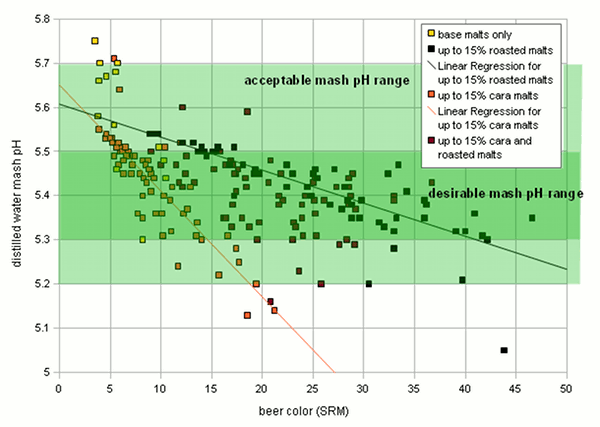I am getting ready to brew an IPA this weekend, and was planning to try to match the water profile of one of my all-time favorite IPAs. The profile is as follows (in ppm):
Ca - 163
Mg - 8.5
Na - 21
SO4 - 365
Cl - 23.5
HCO3 - 104
At this time, I do not have a pH meter. My city water is awful for brewing, so I use 100% distilled water.
Here are some questions I have:
1) In order to hit the HCO3 target, I would need to add 0.3g per gallon of baking soda to keep the Na on target while gaining some bicarbonate. Even then, the bicarbonate would be ~60ppm. Should I even be concentrating on the HCO3 target, or just focus on Ca, Cl, and SO4?
2) To the mash, I will be adding 10g Gypsum, 0.8g CaCL, and 1.2g Baking Soda. Per Bru'n Water, this puts my estimated mash pH around 5.2. If I enter the same stuff into EZ Water, it puts my estimated pH at 5.45 ONLY if I add 3oz of Acid Malt. I do not have any acid malt entered into Bru'n water.
Any ideas as to why there is such a discrepancy between the two? Is there anyone with a pH meter out there that can tell which of the two they have found to be more accurate with their mash estimates?
As you can tell, I am not a scientist. Any help or input would be greatly appreciated!
Ca - 163
Mg - 8.5
Na - 21
SO4 - 365
Cl - 23.5
HCO3 - 104
At this time, I do not have a pH meter. My city water is awful for brewing, so I use 100% distilled water.
Here are some questions I have:
1) In order to hit the HCO3 target, I would need to add 0.3g per gallon of baking soda to keep the Na on target while gaining some bicarbonate. Even then, the bicarbonate would be ~60ppm. Should I even be concentrating on the HCO3 target, or just focus on Ca, Cl, and SO4?
2) To the mash, I will be adding 10g Gypsum, 0.8g CaCL, and 1.2g Baking Soda. Per Bru'n Water, this puts my estimated mash pH around 5.2. If I enter the same stuff into EZ Water, it puts my estimated pH at 5.45 ONLY if I add 3oz of Acid Malt. I do not have any acid malt entered into Bru'n water.
Any ideas as to why there is such a discrepancy between the two? Is there anyone with a pH meter out there that can tell which of the two they have found to be more accurate with their mash estimates?
As you can tell, I am not a scientist. Any help or input would be greatly appreciated!





